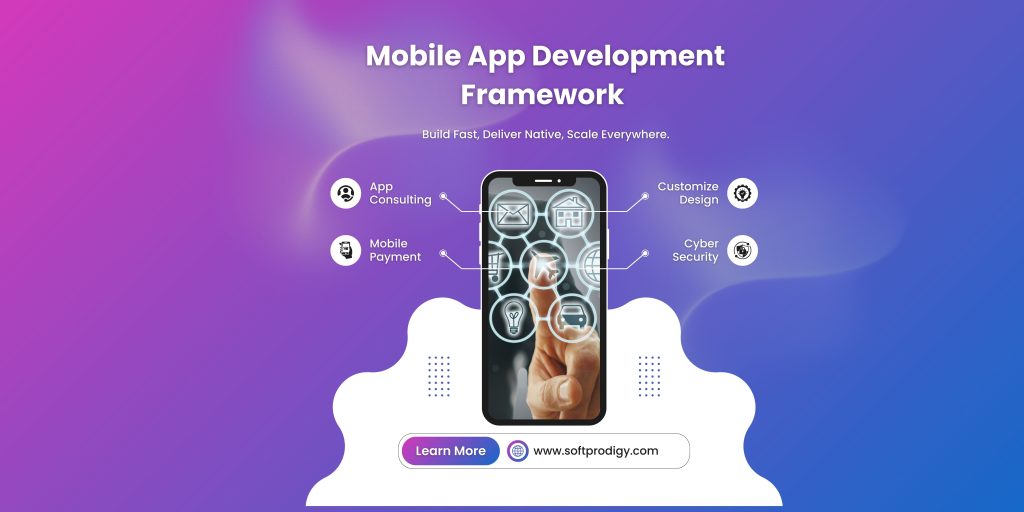When it comes to mobile app development, Python is tagged as the most popular programming language in the world. With the highest increase in ratings (25.3%) in 2025, Python is the undisputed default language of choice in many industries in the USA and other regions.
Historically, Python didn’t have a strong reputation for mobile GUI applications. Thankfully, there have been a number of advancements in Python mobile app development.
In this article, we’ll take a look at the two main Python application development frameworks: Kivy and BeeWare. We will walk through the pros and cons of each library.
Let’s begin!
Why Python for Mobile App Development?
In the USA, businesses seek rapid deployment and scalability. This is where Python helps them meet their demands. Readability, extensive libraries, and active community are the key benefits of Python app development services.
On top of that, rich Python frameworks like Kivy and BeeWare make cross-platform development seamless. These frameworks let you create one codebase for various platforms (Android and iOS). This approach helps businesses save time, money, and energy.
Kivy: Cross-Platform Python App GUI Development Library
Kivy is an open-source Python library for cross-platform GUI app development. Python machine learning engineers use it to build cross-platform apps and graphical user interfaces (GUIs) that run smoothly on different platforms like Android, Windows, and Java.
Kivy comes with its own custom UI toolkit, which works smoothly across different platforms without relying on any native features of any of those platforms. This means it can bring the portability of your application from one platform to another without letting your app look and feel like other native apps.
Pros of using Kivy for Python mobile app development in the USA:
| Feature | Description |
|---|---|
| Open Source | Kivy is an open-source library, assisting you in fast app development. |
| MIT License | It comes with an MIT licence, so you can expect no hidden costs. |
| Single Codebase | This framework allows you to use a single codebase for apps on different devices, saving you time and energy. |
| GPU-Accelerated | Since Kivy is accelerated by the GPU, you can adapt OpenGL to develop the graphic engine. |
| Organized Coding | It makes writing codes more organized and precise than other Python frameworks. |
Cons of using Kivy for Python mobile app development in the USA:
• Kivy comes with a non-native UI.
• It has a larger package size.
• Kivy has limited platform-specific features.
• It is less suitable for complex applications.
Potential Use Cases of Kivy
With its focus on rapid prototyping and innovative user interfaces, Kivy opens doors to a wide range of application development possibilities. Let’s delve into some of its key use cases:
• Videos: With Kivy modules, it’s possible to play and stream media files. The video player supports various elements, such as play, pause, and stop buttons, along with subtitles.
• User Interface: A set of widgets and controls are available to improve the visual appeal of your interface. In addition to dark mode, it introduces new icons and design elements.
• Gestures and multi-touch: Some widgets support gestures and multi-touch actions. Capturing the user’s motions is also possible by creating a gesture library.
• Scientific visualization: Kivy can be used to create interactive visualizations for scientific data, simulations, and experiments.
BeeWare: Native Python Mobile App Development Framework
BeeWare is another widely used Python mobile app framework for building native-looking applications with a single codebase. It comes with an array of tools that developers can use to write native-looking mobile applications.

While Kivy employs a custom UI toolkit, BeeWare relies on the platform’s native UI toolkit. This means you can build mobile apps that look and feel completely native to each specific mobile platform.
Pros of using BeeWare for Python mobile app development in the USA:
| Feature | Description |
|---|---|
| One Code Base | BeeWare has a single codebase for all the mobile platforms. |
| Cost-Effective | You can reuse the codes, reducing the cost of upgrades. |
| Native-like Feel | BeeWare provides a native look and feel on different platforms. |
| Usability | It comes with a BSD license, meaning anyone can modify and use the tools. |
Cons of using BeeWare for Python mobile app development in the USA:
• BeeWare is a relatively new framework and doesn’t have a solid community.
• It requires more work due to potential API changes, bugs, and a lack of features.
• The library has a steeper learning curve due to platform-specific components.
• It comes with limited customization options for UI elements.
Potential Use Cases of BeeWare in Python App Development
BeeWare opens up exciting possibilities for Python machine learning engineers who prefer Python’s simplicity and elegance for their cross-platform projects. Here are some of its key use cases:

• Cross-platform GUI: Build desktop applications with graphical user interfaces that run on multiple operating systems using a single codebase.
• Prototyping: Quickly develop prototypes of applications to test user interfaces or functionalities across different platforms.
• IoT and embedded devices: Create user interfaces for IoT devices or embedded systems that require lightweight and cross-platform GUIs.
• Game development: Develop simple 2D games or interactive applications using Python for different platforms.
Key Differences Between Kivy and BeeWare
Now that you understand the basics of Kivy and BeeWare, let’s examine the differences to help you decide the best solution for Python mobile app development:
• User Interface
Kivy comes with a custom UI, but BeeWare supports native UI. While none of these approaches is clearly better, it depends on the type of mobile app you want to build. For instance, Kivy is best if you expect users to operate your app on different devices. It works well if you want its look and controls to be consistent.
Still Not Sure Which Python Framework is Right for You?
Let our experts help you choose and build the right mobile app solution tailored to your goals.
Whereas, BeeWare uses a codebase to produce different code versions for different platforms, allowing it to fully support native UI. Thus, your app uses native features like platform-specific buttons and behaves in the way that is expected on the app platform.
• Maturity
As a well-established Python framework, Kivy boasts a stable codebase and a wealth of resources, including tutorials and a strong community of developers. This makes it a dependable choice for developers who are looking for a proven toolset for building cross-platform apps.
On the other hand, BeeWare is relatively new, which means its tools and libraries might not be as robust or thoroughly tested as Kivy’s. However, its focus on supporting native UI development for each platform brings exciting potential.
• Usability
Kivy is designed with simplicity and efficiency in mind, making it an excellent choice for Python machine learning engineers seeking a straightforward framework. Its consistent API and declarative syntax reduce the learning curve, allowing developers to build cross-platform applications quickly without the need for intricate platform-specific customizations.
In contrast, BeeWare provides a suite of tools, each with unique functionalities. While this modular approach offers flexibility and customization, it can also introduce complexity, especially for developers new to the ecosystem. However, for those who invest the time to master its tools, BeeWare offers a robust environment for creating apps with a native feel.
In Conclusion
Both Kivy and BeeWare are powerful Python app frameworks that offer unique advantages and disadvantages. While Kivy is suitable for complex projects that require a high degree of customization, BeeWare is ideal for projects that prioritize native support and ease of development.
Remember to consider the project’s requirements, development ease, and long-term support to ensure success with your Python mobile app development.
Need more help? Let’s connect!
FAQs:
Is Python suitable for mobile app development?
Yes! While Python isn’t supported on Android and iOS platforms, its frameworks like BeeWare and Kivy can help you build mobile apps that run smoothly on different platforms.
When is it best to use BeeWare?
If you don’t prioritize cross-platform usability, BeeWare is a great option. It is well-suited for application development projects requiring native user experience and higher flexibility for customization.
Is Kivy worth using?
If you’re comfortable with a non-native UI toolkit, Kivy can be a great choice. It helps you write mobile applications using Python without having to learn another platform-specific language. Ultimately, whether Kivy is worth using depends on your specific development needs and preferences.
What factors should be considered before choosing a Python library?
Keep in mind the project requirements, target audience, skill set, future maintenance needs, and the platforms for which the app is developed. Both Kivy and BeeWare come with their own set of pros and cons that must be considered before choosing one from them. It is better to rely on Python app development services for better results.
As COO and Director at SoftProdigy, Divya Chakraborty empowers cross-functional teams to build Agentic AI, ServiceNow and data cloud solutions that turn complex data into measurable business outcomes.






